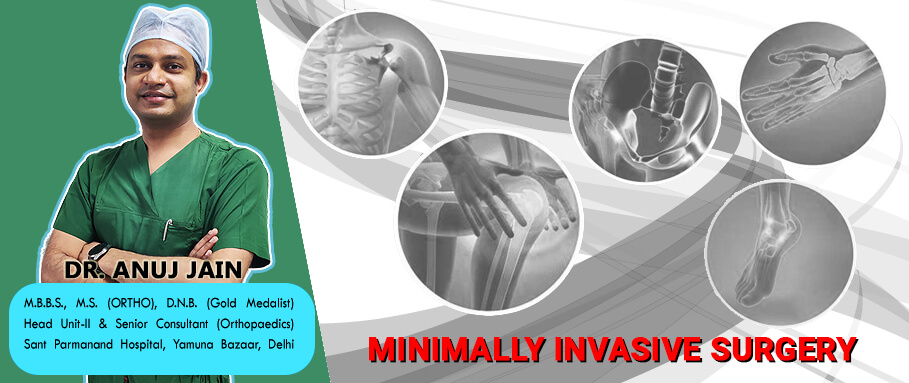Minimally invasive Surgery

Minimally invasive surgery is where surgeons use a variety of techniques to operate with less damage to the body tissues than with open surgery. Because of the reduced trauma to the muscles and soft tissues (compared to open procedures), the potential benefits are:
- Better cosmetic results from smaller skin incisions (sometimes as small as several millimeters)
- Less blood loss from surgery
- Reduced risk of muscle damage, since less or no cutting of the muscle is required
- Reduced risk of infection and postoperative pain
- Faster recovery from surgery
- Early rehabilitation
- Diminished reliance on pain medications after surgery
Arthroscopy allows your doctor to perform minor repairs to joints through a small incision and with the use of a tiny fiber-optic camera function. It is a minimally invasive treatment option. This procedure enables the surgeon to alleviate pressure in a stiff joint, to remove bone spurs, and to trim tissues that are causing harm to the joint. This type of surgical procedure commonly involves the knees, hips, and shoulders.
Joint replacement surgeries may either be total or partial, depending on your condition. With this type of surgery, your doctor replaces your damaged joint with prosthesis. Both hip replacement and robotic knee surgery can be done through minimally invasive approach.
Osteotomy involves the removal of a section of bone near a damaged joint. For example, when this is performed on a knee that has arthritis, the arthritic bone is reshaped in such a way as to shift the weight evenly – thus providing pain relief and avoiding (or delaying) a total knee replacement.
Minimal invasive surgery allows less soft tissue damage thus maintaining the periosteal sleeve over fracture. This allows early fracture healing and union. Also there is less pain and patient can go for early rehabilitation.






